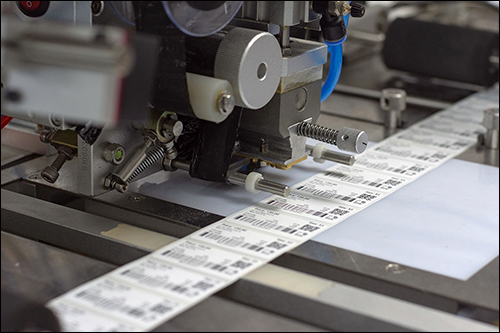Global retail label manufacturer ITL Group has released a bundled UHF RFID solution to enable fast proofs-of-concept and deployments for retailers that may find traditional RFID systems too expensive or complex to deploy. The system is designed to simplify RFID deployments at a low cost of entry, so that smaller retailers can begin experimenting with the technology. Once the system is set up, the company claims it can be installed within a matter of days.
ITL Group, based in the United Kingdom, is leveraging its own label manufacturing and service bureau, as well as its new ReflectRFID cloud-based software and hardware partnerships, to offer the full solution, known as 360RFID. The end goal, the label company reports, is to make it easier for retailers to adopt RFID. ITL has a history with supplying RFID labels for such retailers as U.K.-based River Island, as well as The Foschini Group (TFG), according to Simon Phelps, ITL’s European sales and marketing director. The 30-year-old company converts inlays for formats such as self-adhesive, paper board and fabric, then supplies them to customers from its locations around the world.

Four years ago, ITL acquired Montreal-based RFID solutions company Overheer. and it has begun offering its ReflectRFID software, which came with the acquisition, for use with ITL’s UHF EPC RFID labels, enabling retailers and brands to capture and manage read data for the purpose of inventory management. ITL also partners with RFID reader providers to help build a full solution for its customers. Such products include handheld or fixed readers, as well as RFID reading robots and software. For instance, ITL works with Zebra Technologies and other companies for handheld devices, and with Keonn Technologies for fixed readers and robots.
Released this month, the 360RFID bundles the offerings into a single solution intended to lower the cost of entry and be easy to pilot or deploy. In fact, Phelps says, several retailers are currently testing the technology, including a Canadian store chain that recently completed a four-day pilot for seven stores. “One of ITL’s key strengths,” he states, “is that we can offer best-in-class versions of all these components and bundle them together to create a single integrated solution.”
In that way, Phelps explains, a retailer has a single point of contact from one RFID provider. “This is of particular benefit at the POC [proof-of-concept] stage,” he notes, “when the emphasis needs to be on establishing if RFID has a place in your business.” The system is designed to remove barriers, such as the need for integration from multiple providers.
Typically, a retailer could begin with a pilot at a few select stores, or in certain departments within a store. ITL will tag the products to be tracked and provide handhelds or install fixed readers. In the case of robotics, an RFID reader built into a robot can be programmed to travel a store’s aisles, capturing tag reads after business hours.
ITL’s software is cloud-based and is offered as a software-as-a-service (SaaS). During a pilot, the software can manage read data and provide inventory counts, as well as alerts and analytics regarding the stock counts at the front of a store or in the back room. As soon as goods are tagged, the store can then begin viewing inventory data and using that information to ensure the on-shelf availability of goods. It can also compare the data against non-RFID equipped stores.
Based on that information, stores can determine whether and how quickly to deploy the technology permanently. Over time, companies can integrate the ReflectRFID software directly into their own inventory-management system. The solution can be provided along with pre-encoded tags, in which case a store could simply begin reading tags via handheld devices, and can also offer a Web-based application enabling users to print tags in-store.
Phelps predicts the solution will be of greatest value to small and mid-sized retailers, though he believes some large brands and retailers will deploy the system as well. Most larger companies have the benefit of an IT department that can accomplish the installation and integration more easily, he adds. ITL supplies such companies with its RFID labels as it proceeds to scale up RFID solutions en masse. “In the RFID space,” he states, “we see our niche for 360RFID in the small to medium-sized businesses with an end-to-end solution.”
Such companies still want to test the technology, ITL finds, and they want to do so quickly. “This is out of the box,” Phelps says, “but we still add a level of customization because there’s never a one-size-fits-all.” ITL is urging companies to keep their focus on inventory management first, and then to expand their deployments to other use cases, such as point-of-sale, shrinkage reduction or consumer engagement (such as interactive magic mirrors). “Overwhelmingly,” he reports, “the largest ROI [return on investment] still remains around inventory accuracy.”
With most pilots, Phelps says, “the ROI that captivates them the most is the sales uplift related to better stock management.” Then they begin to identify all the advantages that go along with it. “Before you know it, you have a really compelling business case.” The company is currently working with several brands and retailers. Tagging at the point of manufacture, Phelps explains, allows fast fashion management to view supply chain from the point of manufacture to sale. In the meantime, he says, ITL continues to sell its RFID labels to retailers and brands worldwide. “We will always see our software as an enabler” for those tags, Phelps states.


